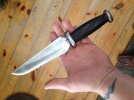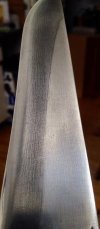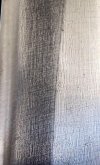- Joined
- Mar 26, 2009
- Messages
- 2,228
Has anybody else worked with this stuff? I've done four blades over the years-a chef's knife, a bowie and this hu die dao, which is the only one I've done a good etch on:



This thing was groun edge to spine, so none of that is grinding marks-it's all grain.
The pieces I've used had to be drawn to almost bright blue to get them to stop chipping on a brass rod, so the carbon content is right up there.



This thing was groun edge to spine, so none of that is grinding marks-it's all grain.
The pieces I've used had to be drawn to almost bright blue to get them to stop chipping on a brass rod, so the carbon content is right up there.



